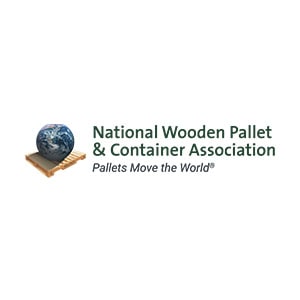Why Wood Packaging is Best for Shipping Fruits and Vegetables
If you’re looking for the best way to ship your fresh fruits and vegetables, wood packaging is your best bet.
Wood packaging has been used for centuries in the preparation, packaging, storage, and transportation of food.
This is mostly due to all the awesome benefits wood packaging entails like low-costs, helping the environment, as well as ease of use.
Benefits of using wood packaging for shipping fruits and vegetables
Wood packaging has some really awesome benefits! Some of those benefits include:
- Stronger, sturdier material which means it’s able to endure high levels of stress. Wood packaging is designed to handle heavy mechanical stress which is commonly experienced during transportation and storage.
- Best for heavy products.
- Moisture and erosion resistant so they typically aren’t damaged by moisture and products stay dry.
- Saves space since most wood packaging can be stacked.
- It’s cost-effective. Wood packaging is cheaper when compared with plastic or other shipping material.
- It’s recyclable so, in a way, you are helping the environment when you choose wood packaging over other materials.
- Doesn’t rust
Different types of wood packaging options
There are now more than 1,500 different sizes and styles of wood produce packaging material to satisfy your packaging and shipping needs. Here is a list of some of the most popular types of wood packaging that works perfectly for safely shipping your fruits and veggies depending on what you’re shipping:
1. Wooden crates
Wooden trays work perfectly for the transportation of tomatoes, while large wooden crates are a great option for watermelon and other types of melon as well as other large fruits and vegetables.
Wooden crates are an awesome option for shipping fruits and vegetables because they offer many perks like a higher efficiency for large fruits and they are recyclable.
2. Wire-bound Crates
Most often used for sweet corn, snap beans, and other produce that requires hydro cooling (crucial for the ripening of produce) although they can be used for a variety of fruits and vegetables. They are sturdy and easily stackable which effectively saves on space.
The great thing about these crates is that they come in a variety of sizes — from a half bushel to standard pallet bin size and have enough space to allow proper ventilation and cooling.
The down-side to using wire-bound crates is that they are not usually reused.
3. Wood pallets
The produce industry uses approximately 190 of the 700 million pallets produced every year in the US and depending on the size of the produce package, one pallet can hold between 20 and 100 individual packages of produce.
Plastic film is typically used to secure produce, which severely restricts proper ventilation to your produce. Luckily, there is an awesome alternative that properly secures the load and offers sufficient ventilation — plastic netting.
4. Pallet Bins
Pallet bins are typically used to move produce from field to packing location. Capacities range from 12 to over 50 bushels.
When stored outside, they last approximately 5 years. When properly stored they can last more than 10 years and be reused multiple times.
5. Corrugated Fiberboard
Corrugated fiberboard is commonly mistaken for cardboard. It comes in all weights and styles and is low cost compared to other wood shipping materials. For this reason, it’s the most popular choice for shipping produce and will probably remain so in the future since strength and features are continuously being improved.
This is the best option if you’re looking for low cost and ease of use.
One drawback is that cold and hot temperatures can reduce the durability and strength unless specifically treated.
Requirements for shipping fruits and vegetables in wood packaging
Wood packaging for your fruits and vegetables should offer:
- Protection- Must protect produce from poor environmental conditions as well as mechanical damage during handling and distribution. Your packaging of choice should be sturdy enough to resist damage throughout the packaging, storing, and shipping process.
- Identification- Must indicate what the product is on the packaging. For example; name, brand, size, grade, variety, weight, grower, shipper, and country of origin may be required depending on where you are shipping to or from.
- Containment- The packaging must completely enclose the product without wasting space and should be packed in convenient units for handling and distribution. As a general rule, packages of produce exclusively handled by hand should be no heavier than 50 lbs. For produce that will be moved by forklift, weight shouldn’t exceed 1200 lbs.
Why you should use wood packaging over another packaging material
As you can see, wood packaging has some amazing benefits, but what’s stopping you from choosing another type of packaging material?
The answer’s easy, wood packaging has many noteworthy advantages over materials like plastic and metal (rust resistance, cost, and capacity).
Good manufacturing quality, handling practices, and proper sanitation treatment makes wood a highly suitable option for transportation and storage of fruits and vegetables










Leave a Reply